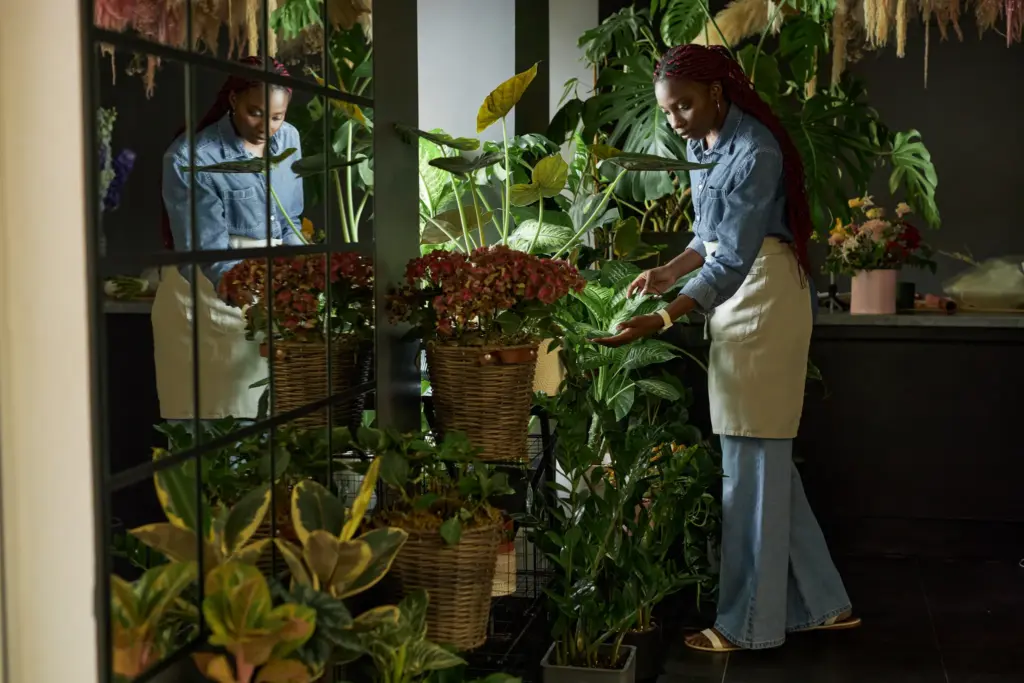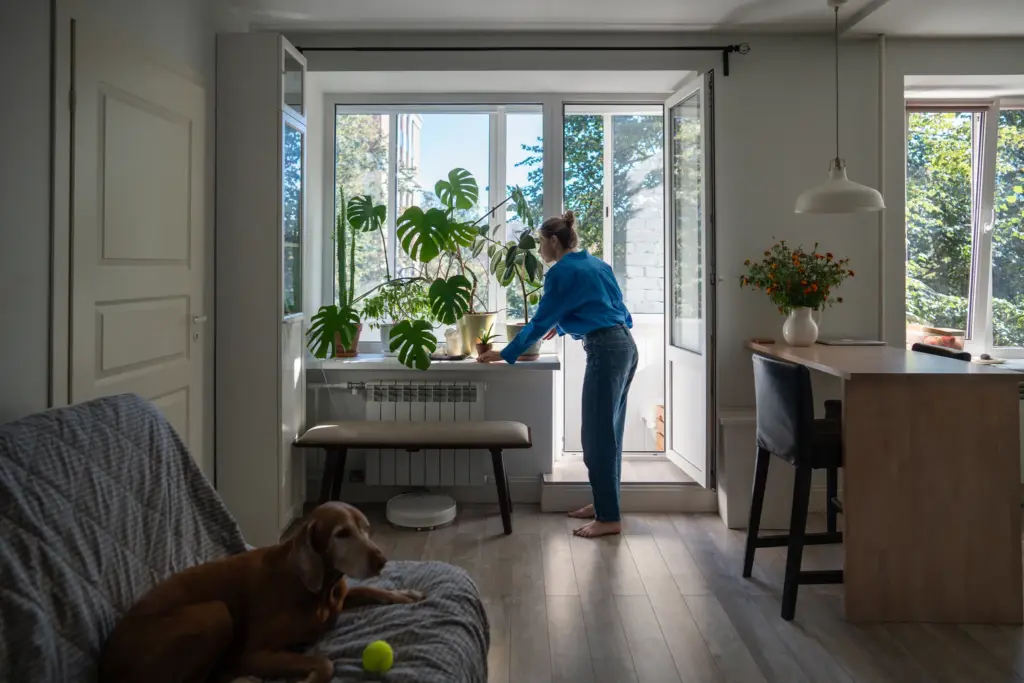Many homeowners are looking for natural ways to improve their indoor environments, and one question keeps coming up: what are the best indoor air cleaning plants for a healthier home? While advanced air purifiers and professional duct cleaning services play an important role in maintaining clean air, nature has its own quiet, beautiful helpers. Indoor plants not only bring life and color to a space but can also filter out common airborne pollutants. Science supports this idea—studies like the NASA Clean Air Study (NASA PDF) have shown that certain plants can remove toxins such as benzene, formaldehyde, and trichloroethylene from indoor air. However, choosing the right plants and caring for them properly are key to getting the most benefit.

Why Plants Can Help Clean Indoor Air
Plants naturally absorb carbon dioxide and release oxygen during photosynthesis. Many species also take in volatile organic compounds (VOCs) and other pollutants through tiny pores on their leaves. These chemicals then move into the plant’s root zone, where soil microorganisms help break them down. The result is a subtle but continuous filtration process. While a few plants in a room won’t replace a full HVAC filtration system, they can complement mechanical cleaning efforts and create a fresher-feeling environment.
The Science Behind Plant Air Purification
NASA’s landmark research in the 1980s explored ways to keep air clean inside space stations. The findings revealed that certain plants were highly effective at removing specific pollutants. For example, the peace lily was found to reduce airborne mold spores, while spider plants helped lower carbon monoxide and nitrogen dioxide levels. More recent research has refined these findings, showing that a combination of plants, good ventilation, and regular home cleaning can significantly improve indoor air quality. The U.S. Environmental Protection Agency (EPA) also notes that plants contribute to better air quality by maintaining balanced humidity, which discourages the spread of dust and allergens.
Characteristics of Effective Air Cleaning Plants
When deciding on the best indoor air cleaning plants for your home, look for species with broad leaves, high transpiration rates, and low maintenance needs. Plants that are adaptable to low-light conditions tend to do well indoors year-round. Many effective species are also resilient to occasional neglect, making them ideal for busy households. Another consideration is safety—if you have pets or young children, choose non-toxic plants or keep potentially harmful species out of reach.

Plants That Work Well in Ohio Homes
Ohio’s climate, with its long winters and relatively short summers, means many homeowners rely on indoor plants for greenery year-round. Plants that tolerate lower light levels are especially valuable during the darker months. Peace lilies, snake plants, pothos, and ferns thrive in such conditions, quietly filtering the air while adding visual appeal. Because homes are often sealed tightly during cold months, having these plants inside can help offset the reduced natural ventilation that comes with winter weather.
Integrating Plants with Other Air Quality Efforts
While plants make a difference, they work best as part of a broader air quality strategy. Combining greenery with professional services like air duct cleaning ensures pollutants are removed from both the air and the ventilation system. Regular vacuuming, using low-VOC cleaning products, and maintaining optimal humidity levels further enhance the benefits. Plants add a layer of natural filtration and also serve as indicators—if certain plants begin to struggle, it may signal issues like poor light, excess humidity, or higher pollutant levels.
Examples of Top Air Cleaning Plants
The peace lily, with its glossy leaves and white blooms, is often highlighted as one of the best indoor air cleaning plants. It’s particularly good at removing mold spores and certain VOCs, and it thrives in low to medium light. Another favorite is the snake plant, also known as mother-in-law’s tongue. This hardy plant tolerates neglect, low light, and irregular watering, while steadily converting carbon dioxide to oxygen even at night. Spider plants are another easy-care option, producing cascading leaves and small offshoots that make propagation simple. For a touch of the tropics, bamboo palms not only filter the air but also add a lush, vibrant look to living spaces.

Understanding the Limitations
It’s important to have realistic expectations about what plants can do. While they can remove some airborne pollutants, the volume of air in a typical home means you would need many plants to see dramatic results from them alone. NASA’s research suggested at least one plant per 100 square feet for noticeable effects. However, even a smaller number can improve the feel of a room and contribute to a healthier indoor environment when combined with proper cleaning and ventilation.
Placement Matters
Where you place plants affects their ability to help with air quality. Positioning them near sources of pollutants—such as in kitchens, near printers, or close to entryways—can help them capture contaminants more effectively. At the same time, be sure they get the right light for their species. In Ohio homes, south- or west-facing windows provide the brightest light, while north-facing windows suit low-light plants like snake plants and pothos. Grouping several plants together can also create microenvironments that increase humidity and filtration efficiency.
Plant Care for Maximum Benefit
Healthy plants filter air more effectively, so proper care is essential. Overwatering can lead to root rot and mold growth, while underwatering weakens the plant and reduces its filtering capacity. Dusting leaves regularly keeps pores open, allowing for optimal gas exchange. Repotting when necessary prevents the roots from becoming cramped, and using high-quality potting soil supports both plant health and beneficial microorganisms that assist in breaking down pollutants.

Balancing Beauty and Function
Choosing the best indoor air cleaning plants isn’t just about efficiency—it’s also about creating a space you enjoy. A mix of large statement plants and smaller tabletop varieties can bring depth and texture to your décor while working quietly to improve air quality. For example, a large fiddle leaf fig or rubber plant can anchor a living room, while smaller ferns or pothos add charm to shelves and desks. Combining function and aesthetics ensures your plants remain a joy to care for and a welcome part of your home.
Pets, Children, and Plant Safety
Some of the most effective air-cleaning plants can be toxic if ingested by pets or children. Peace lilies, for example, can cause irritation if eaten. If safety is a concern, opt for non-toxic species such as areca palms, parlor palms, or certain types of ferns. Always check plant safety through reliable sources like the ASPCA’s toxic and non-toxic plant database before bringing new greenery into your home.

Seasonal Care Adjustments
Ohio’s seasonal changes affect indoor plant needs. In winter, shorter days and lower light mean many plants grow more slowly and need less water. During summer, higher temperatures and brighter light encourage more growth, and plants may need more frequent watering and feeding. Adjusting your care routine with the seasons helps maintain healthy plants that can continue contributing to better air quality year-round.
Making Plants Part of a Healthier Home
Ultimately, the best indoor air cleaning plants are those that fit your lifestyle, match your home’s lighting conditions, and complement other air quality efforts. Whether you choose low-maintenance snake plants for the bedroom, lush ferns for the bathroom, or a peace lily for the living room, you’re adding both beauty and function to your environment. Combined with routine home cleaning and professional services like upholstery cleaning, plants can be an important part of a holistic approach to healthier indoor living.
Conclusion
Bringing the outdoors inside with the best indoor air cleaning plants is a simple and satisfying way to support a healthier home. While they won’t replace professional cleaning or HVAC maintenance, plants enhance air quality, add beauty, and create a sense of calm. By choosing species that suit your home, placing them strategically, and caring for them well, you can enjoy cleaner air and greener surroundings all year. For homeowners in Lake, Cuyahoga, Geauga, Summit, and Portage Counties, Green and Clean Home Services offers expert air quality solutions that work hand-in-hand with your indoor greenery to create the healthiest living space possible.


